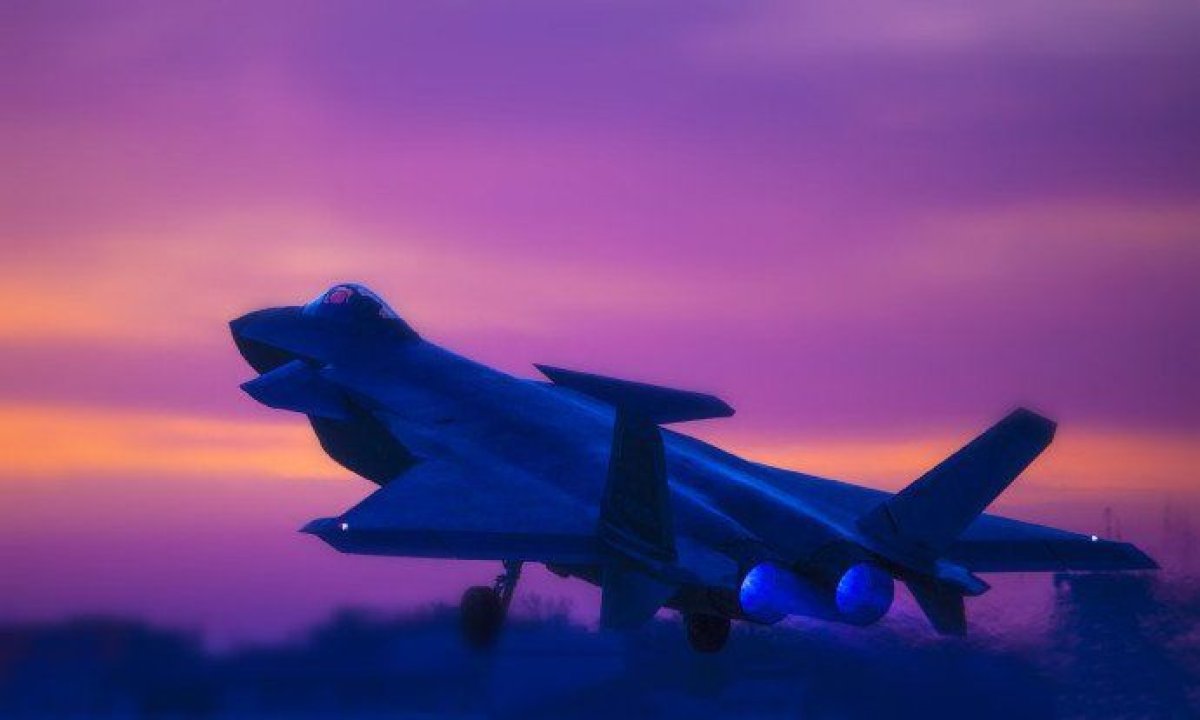China's official military portal published a report Friday detailing how the country's latest stealth fighter has put it in a class with the world's leading military powers—the U.S. and Russia.
The article, authored by Qin Qian of the Chinese Communist Party's junior newspaper China Youth Daily, began by laying out how China's recently commissioned Chengdu J-20 fifth-generation stealth fighter jet places it in an elite class currently only shared by the U.S. F-22A Raptor and Russian Sukhoi Su-57 PAK-FA. The author conceded that China does not have the military experience of the other top-tier forces, but mapped out three main factors that demonstrate how the J-20 is revolutionizing the Chinese air force, beginning with the leap in technology it represents.
"Although 15 to 16 years behind the U.S. Air Force's process, the Chinese Air Force is equipped with the fourth-generation fighters with the Russian Aerospace Forces almost synchronously," Qin wrote, using China's own standard of evaluating aircraft generations, which is based on when an aircraft was integrated into a nation's armed forces, according to the Center for Strategic and International Studies.
"Compared with the fourth-generation single-engine light stealth fighter F-35A that Japan, the Republic of Korea (ROK) and other neighboring countries are equipped with, China's twin-engine heavy stealth fighter J-20 enjoys air superiority and has more powerful and comprehensive combat capability in gaining air domination and attacking ground targets," Qin added, referring to aircraft that would all be considered fifth-generation by international standards.

Qin argued that the J-20 also "upgrades the integrated offensive-defensive capability" of the People's Liberation Army (PLA) Air Force by improving on previous fourth-generation Sukhoi Su-27 fighters acquired from Russia and Chinese J-11 and J-16 fighters, which were developed based on the Su-27 design. The report also noted China's development of the J-10 light fighter.
The author went on to say that the J-20 "will further enhance the integrated offensive and defensive capability of the PLA Air Force. In air offensive campaigns (AOCs), J-20 stealth fighter can create favorable conditions for its fellow fighters by penetrating enemy's air defense system first."
Related: How Does Russia's Air Force Compare to America's?
The author detailed what makes the J-20 a fifth-generation fighter, including "sophisticated, powerful, multirole active phased-array radar with longer detection distance and more powerful detection capability." The J-20 is also reportedly capable of detecting targets at double or even triple the distance of previous fighters.
A devastating machine on its own, the J-20 becomes a particularly formidable foe when combined with the latest updates to previous aircraft such as the J-10, J-11, J-16 and Su-30. Together these mixed formations can conduct a wide range of missions, while also coordinating with ground forces to enhance joint combat operability.

The U.S. is still top gun when it comes to air superiority and likely will remain so for the foreseeable future. Besides having a sizeable lead in equipment and technology, the U.S. also outspends China on defense by three times. This year's massive $717 billion National Defense Authorization Act is the highest in at least a decade, meaning the U.S. was likely to retain its post. The branch is not without its vulnerabilities, however. With the U.S. firmly grasping first place, China and Russia have increasingly worked together to make up the difference.
Both countries are rapidly expanding their military capabilities and asserting themselves on the world stage in new ways deemed as a challenge by the U.S. In a startling revelation last month, Air Force Secretary Heather Wilson told the Senate Appropriations Subcommittee on Defense that even upgraded U.S. Air Force E-8C JSTARS command and control aircraft "would be shot down in the first day of conflict" with Russia and China due to the countries' surface-to-air missile ranges.
Uncommon Knowledge
Newsweek is committed to challenging conventional wisdom and finding connections in the search for common ground.
Newsweek is committed to challenging conventional wisdom and finding connections in the search for common ground.
About the writer
Based in his hometown of Staten Island, New York City, Tom O'Connor is an award-winning Senior Writer of Foreign Policy ... Read more
To read how Newsweek uses AI as a newsroom tool, Click here.








